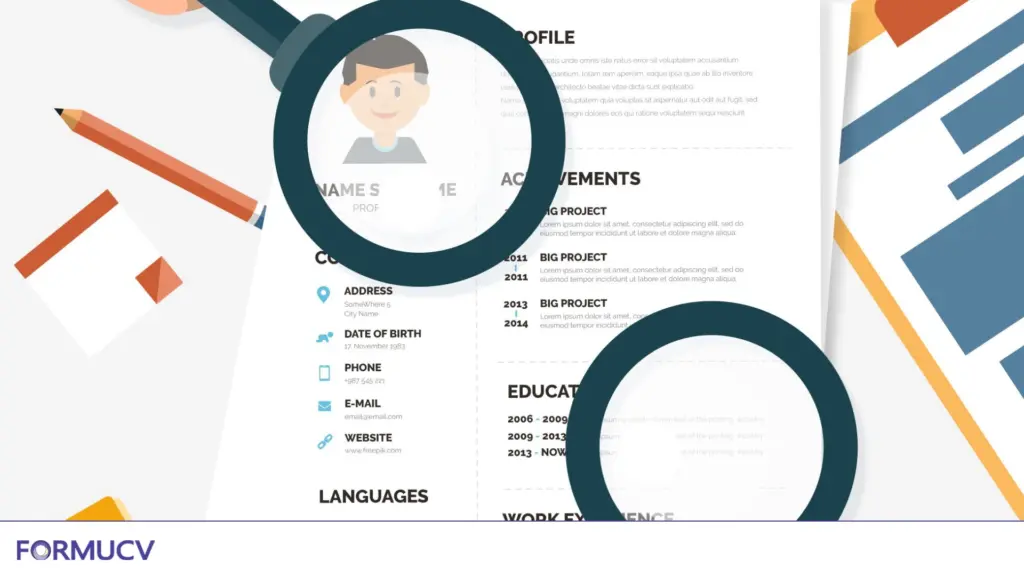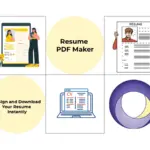
How to Make a Good Resume: Tips and Examples for Success
Even in a world of networking apps and AI-driven hiring platforms, most employers still ask for a resume. It’s your first impression on paper, a snapshot of your skills, achievements, and potential. Recruiters scan a resume for about 6–8 seconds before deciding whether to keep reading. That’s why clarity, structure, and relevance matter more than clever design. But how to make a good resume?
Table Of Content
- Step 1: Start With the Right Format
- Step 2: Keep It ATS-Friendly
- Step 3: Lead With a Strong Summary
- Step 4: Quantify Achievements in Work Experience
- Step 5: Highlight Relevant Skills
- Step 6: Include Education, But Keep It Brief
- Step 7: Customise Each Resume to the Job
- Step 8: Keep the Design Clean and Professional
- Step 9: Don’t Forget Keywords, But Use Them Naturally
- Step 10: How to make a good resume? Keep It Concise
- Step 11: Proofread and Get Feedback
- Step 12: How to Make a Good Resume? Update Regularly
- Final Thoughts
We’ve reviewed resumes where candidates buried substantial achievements under walls of text. Others used outdated formats with no keywords, which meant they never made it past applicant tracking systems (ATS). The good news? Fixing these issues isn’t complicated once you know what recruiters and hiring software are looking for.
Step 1: Start With the Right Format
The format is your foundation when figuring out how to make a good resume. Three main styles exist:
- Chronological: Lists work history in reverse order. Best for steady career growth.
- Functional: Focuses on skills rather than job titles. Useful for career changers or gaps.
- Combination: Blends both, showcasing skills at the top and experience underneath.

For most job seekers, a chronological or combination format works best. Recruiters like to see a clear timeline, and ATS systems parse these layouts more easily.
Step 2: Keep It ATS-Friendly
Applicant tracking systems filter out resumes that don’t match the job description. To beat the bots:
- Use standard headings like “Work Experience” and “Education.”
- Avoid graphics, tables, or fancy fonts that confuse parsing software.
- Naturally, sprinkle in relevant keywords from the job ad, not as a list dump.
I once saw a strong candidate rejected because their resume used “Professional Journey” instead of “Work Experience.” Small details can block big opportunities.
Step 3: Lead With a Strong Summary
The resume summary (sometimes called a professional profile) is prime real estate. In 3–4 lines, it should highlight your role, years of experience, and a standout skill or achievement.
Example of how to make a good resume summary:
Marketing specialist with 6+ years of experience driving B2B campaigns across the tech sector. Skilled in SEO, content strategy, and analytics. Increased lead conversions by 34% at previous employer.
This works because it’s short, metric-driven, and customised to the role. Compare that with vague statements like “seeking a challenging position,” which add no value.
Step 4: Quantify Achievements in Work Experience
Instead of listing duties, show results. Recruiters want to see impact, not job descriptions.
Weak:
- Managed social media accounts.
Strong:
- Grew LinkedIn engagement by 120% in 6 months through targeted content campaigns.

Numbers catch the eye and prove credibility. Even if you don’t work with data, you can frame achievements: “Trained five new team members,” or “Handled 50+ customer queries daily.”
Step 5: Highlight Relevant Skills
A skills section is essential, especially in IT, finance, or design. Stick to hard skills (e.g., Python, AutoCAD, Salesforce). Soft skills matter, but recruiters prefer to see them reflected in your achievements instead of a list.
If you’re applying for a role in Dubai’s tech sector, including tools like AWS, React, or SQL could significantly boost your resume match score.
Step 6: Include Education, But Keep It Brief
Unless you’re a recent graduate, your degree should occupy less space than your work history. List your degree, institution, and graduation year. You can drop the year if it’s more than 10–15 years old to avoid age bias.
Certifications like PMP, CFA, or Google Analytics can add weight, especially in competitive industries.
Step 7: Customise Each Resume to the Job
One resume doesn’t fit all. Copy-pasting the same file across applications rarely works. Employers want to see alignment with their role.
Here’s a quick method for making a good resume:
- Paste the job description into a tool like FormuCV.
- Compare your resume’s keywords and skills with the posting.
- Adjust your summary, experience bullets, and skills list to close gaps.
This extra 15 minutes can be the difference between “no response” and “you’re shortlisted.”
Step 8: Keep the Design Clean and Professional
Fancy templates may look stylish, but they often fail ATS checks. Stick to clean layouts with consistent fonts, spacing, and section headings. Recruiter-approved templates, like those on FormuCV, balance readability with modern design.
A personal tip: if your resume looks cramped, add white space rather than shrinking the font. Recruiters shouldn’t need a magnifying glass to read your career highlights.
Step 9: Don’t Forget Keywords, But Use Them Naturally
Keyword stuffing feels artificial and is easy to spot. Instead, work job-specific terms into your bullet points.
Example: If the job ad says “experience with project management software,” update your bullet to read:
Coordinated cross-team projects using Asana, improving delivery time by 20%.
That way, you satisfy both the ATS and the human reader.
Step 10: How to make a good resume? Keep It Concise
Most resumes should fit on one page. Senior professionals with 10+ years of experience may stretch to two pages, but never beyond that. Remember, a resume is a highlight reel, not an autobiography.

Step 11: Proofread and Get Feedback
Typos are an instant credibility killer. Ask a colleague to review your resume or run it through a grammar checker. I once spotted a candidate who listed themselves as a “Manger” instead of “Manager.” That single letter could have cost them the role.
Better yet, use tools that check grammar and suggest stronger phrasing. AI-assisted platforms can recommend action verbs and industry terms you might overlook.
Step 12: How to Make a Good Resume? Update Regularly
Don’t wait until you’re desperate for a new role. Keep your resume updated every 6–12 months with new achievements, certifications, or responsibilities. That way, you’re always ready if an opportunity comes along.
Final Thoughts
Learning how to make a good resume isn’t about tricks or gimmicks. It’s about presenting your skills and achievements in a clear, personalised way that matches what employers seek.
If you want a head start, platforms like FormuCV can simplify the process with recruiter-approved templates, AI-driven suggestions, and real-time job match scores. But even without tools, the principles remain the same: clarity, relevance, and proof of impact. A resume won’t land you the job alone, but the ticket gets you through the first door. Make it count.

